Utilizing Predictive Analytics in Marketing

Introduction In the era of data-driven decision-making, businesses are increasingly turning to artificial intelligence (AI) to gain insights into customer behaviour and preferences. One of the pivotal applications of AI in the realm of marketing is predictive analytics in marketing. In this blog post, we will delve into the transformative role that predictive analytics in marketing plays in customer segmentation, revolutionizing the way businesses understand and engage with their diverse customer base. 1. Data-Driven Insights AI-powered customer segmentation begins with a deep dive into vast datasets. Machine learning algorithms can analyse large volumes of structured and unstructured data, extracting meaningful patterns and insights. This data-driven approach enables businesses to move beyond traditional demographics and create segments based on actual behaviour, allowing for a more accurate understanding of customer needs and preferences. 2. Dynamic Segmentation Traditional segmentation models are pretty rigid and don’t change, whereas AI offers dynamic segmentation that evolves in real-time. Customer behaviour is always changing, influenced by seasonality, trends, and external events. AI algorithms continually learn and update these segmentation models, enabling businesses to swiftly respond to shifts in customer behaviour and market conditions. 3. Predictive Analytics AI doesn’t just analyse historical data; it can also predict future behaviour based on existing patterns. Through predictive analytics, businesses can anticipate the needs and preferences of customers within specific segments. This foresight empowers marketers to proactively tailor their strategies, offering personalized experiences that resonate with customers at different stages of their journey. 4. Hyper-Personalization Traditional segmentation models often result in broad categories that fail to capture the nuances of individual preferences. AI takes personalization to the next level by creating micro-segments based on granular data points. This hyper-personalization allows businesses to deliver highly targeted and relevant content, product recommendations, and promotions, enhancing the overall customer experience. 5. Behavioural Segmentation Behavioural segmentation, a cornerstone of AI-driven customer segmentation, focuses on how customers interact with products and services. AI algorithms can analyse click patterns, purchase history, and online engagement to identify distinct behavioural segments. Understanding these behaviours’ allows businesses to tailor marketing strategies that resonate with specific customer actions, driving engagement and conversions. 6. Sentiment Analysis AI goes beyond understanding customer actions to deciphering their emotions. Sentiment analysis, driven by natural language processing (NLP), enables businesses to assess customer sentiment through reviews, social media interactions, and other textual data. This emotional insight enriches customer segmentation, enabling businesses to forge deeper, more personal connections with their audience. Conclusion In conclusion, integrating artificial intelligence into customer segmentation is a game-changer for businesses in the competitive world. AI’s capability to analyze extensive datasets, develop dynamic and predictive segmentation models, facilitate hyper-personalization, delve into behavioral insights, and conduct sentiment analysis empowers businesses to deeply understand and connect with their customers. As we move forward, businesses that leverage predictive analytics in marketing for customer segmentation will be better equipped to navigate the evolving landscape of consumer preferences. The era of one-size-fits-all marketing is giving way to a more nuanced and personalized approach, where AI serves as the driving force behind targeted and impactful customer engagement. Embracing the transformative role of predictive analytics in marketing for customer segmentation is not just a strategic choice; it’s a necessity for businesses looking to stay ahead and deliver exceptional experiences to their diverse customer base.
The Role of Artificial Intelligence in Customer Segmentation
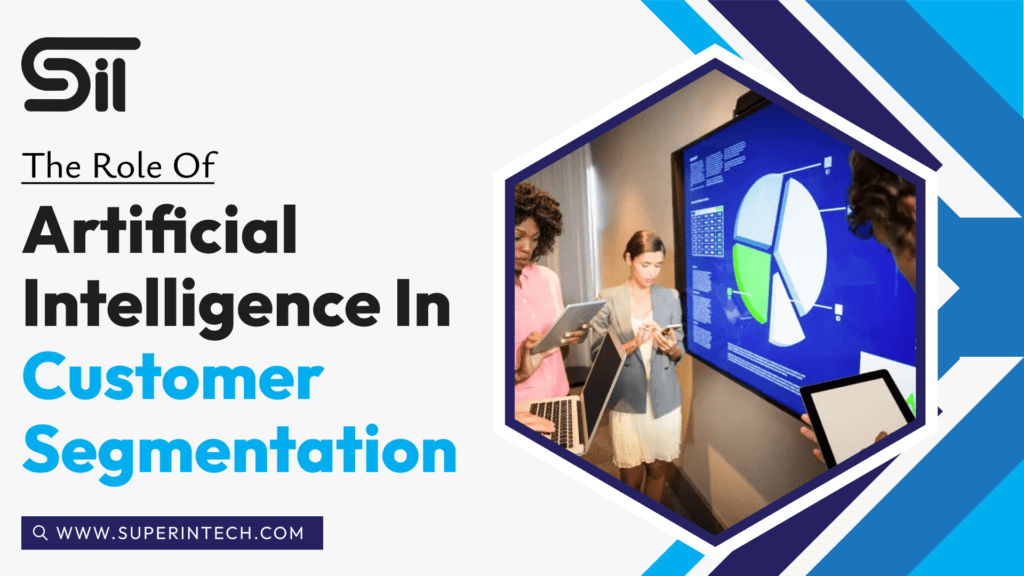
Introduction: The Power of Artificial Intelligence in Marketing In the age of data-driven decision making, businesses are increasingly leveraging artificial intelligence (AI) to gain insights into customer behaviour and preferences. This blog post delves into the transformative role of AI in customer segmentation, revolutionizing how businesses understand and engage with their diverse customer base. Unveiling Data-Driven Insights AI-powered customer segmentation starts with analysing vast datasets. By applying machine learning algorithms, businesses can sift through structured and unstructured data to uncover meaningful patterns and insights. This shift from traditional demographics to behaviour-based segmentation offers a more precise understanding of customer needs. Exploring Dynamic Segmentation AI enables real-time dynamic segmentation, adapting to seasonal shifts, trends, and events. This flexibility ensures businesses can promptly respond to customer behaviour and market changes. AI’s continual learning and updating of segmentation models keep businesses agile, allowing for quick adaptation to new consumer behaviours and market dynamics. Leveraging Predictive Analytics AI’s predictive capabilities extend beyond analysing historical data. It anticipates future customer behaviour’s, enabling businesses to proactively meet customer needs with personalized experiences. Predictive analytics empowers marketers to tailor strategies that resonate with customers at different stages of their journey, enhancing engagement. Mastering Hyper-Personalization Traditional segmentation often results in broad categories that overlook individual preferences. AI refines this by creating micro-segments based on detailed data points. This level of hyper-personalization allows businesses to provide highly targeted content, product suggestions, and promotional offers, greatly improving the customer experience. Analysing Behavioural Segmentation At the heart of AI-driven segmentation is behavioural analysis, which focuses on how customers interact with products and services. AI algorithms parse through click patterns, purchase history, and online engagement to define distinct behavioural segments. These insights allow businesses to craft marketing strategies that directly address specific customer actions, increasing engagement and conversions. Understanding Sentiments with AI AI utilizes sentiment analysis to interpret and analyse emotions expressed in customer reviews, social media interactions, and other text data. This advanced technique helps businesses gain deeper insights into customer feelings, enabling them to tailor their strategies and build stronger emotional connections with their audience. Conclusion: The Future of Marketing with AI Integrating AI into customer segmentation transforms personalized marketing. The capability of AI to analyse extensive data, predict future behaviour’s, and understand customer sentiments equips businesses to forge deeper connections with their customers, thereby enhancing marketing efforts. As the marketing landscape continues to evolve, businesses that adopt AI-driven customer segmentation strategies will be better positioned to navigate the complexities of consumer preferences and succeed in the competitive market.
Affiliate Marketing: Strategies for 2024

Introduction: Affiliate marketing is a key strategy for businesses to grow and increase revenue. In 2024, this field will see more growth and innovation. This blog covers top strategies for affiliate marketing in the coming year, helping businesses stay ahead in the competitive market. 1. Leveraging Artificial Intelligence (AI) and Machine Learning (ML): As technology advances, affiliate marketers are embracing the power of AI and ML to optimize their strategies. In 2024, expect to see more sophisticated algorithms that can analyse consumer behaviour, predict trends, and provide valuable insights. AI-driven tools will enable marketers to personalize their campaigns, ensuring that the right products are promoted to the right audience at the right time. 2. Interactive Content and User Experience: Creating engaging content is crucial. In 2024, elements like quizzes, polls, and videos will be essential. These interactive features will attract more users and keep them engaged longer. This increased engagement will lead to higher conversion rates, making it a must-have strategy for affiliate marketers. 3. Influencer Collaboration 2.0: Influencer marketing remains important. In 2024, a data-driven approach will be key. Marketers will use data to find influencers with the right audience, making partnerships more effective. By leveraging big data and analytics, businesses can identify the most suitable influencers, ensuring that their marketing efforts reach the right people and generate better results. 4. Blockchain Technology for Transparency: As concerns over data privacy and transparency grow, blockchain technology is set to revolutionize affiliate marketing. Blockchain ensures transparency in tracking transactions and commissions, reducing the risk of fraud and providing a secure environment for all parties involved. In 2024, expect more affiliate programs to adopt blockchain to build trust and credibility with their partners. 5. Voice Search Optimization: In the ever-changing world of digital marketing, affiliate marketing remains a key strategy for businesses aiming to expand their reach and increase revenue. In 2024, affiliate marketing is set for more growth and innovation. This blog will explore some advanced affiliate marketing strategies for the upcoming year. 6. Cross-Device Tracking and Attribution Models: As consumers seamlessly transition between devices, tracking their journey becomes more complex. In 2024, affiliate marketers will prioritize cross-device tracking and attribution models. Advanced analytics tools will help attribute conversions accurately across multiple devices, giving marketers a holistic view of the customer journey. This data-driven approach will lead to more informed decision-making and optimized campaign performance. Conclusion: As we step into 2024, affiliate marketing is poised for unprecedented growth and innovation. Embracing AI and machine learning, leveraging interactive content, refining influencer collaborations, adopting blockchain technology, optimizing for voice search, and implementing cross-device tracking are among the strategies that will define success in the affiliate marketing landscape. The key to staying ahead in this dynamic industry is a willingness to adapt and embrace emerging technologies. Affiliate marketers who use these strategies will succeed in 2024. Adapting to new trends and technologies is key. Embracing these innovations will help businesses thrive in the competitive digital landscape of 2024. Staying ahead requires a proactive approach and a willingness to experiment with new techniques and tools. As the affiliate marketing arena evolves, those who remain ahead of the curve are sure to enjoy sustainable growth and enduring success.
The Growing Importance of Digital Accessibility
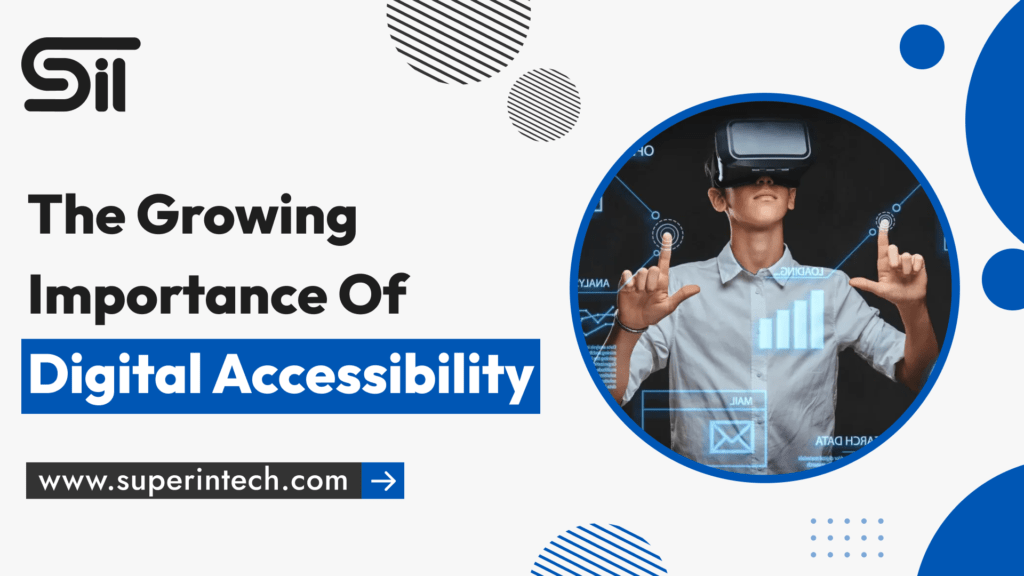
Introduction: Digital accessibility, a critical component of user-centric design, has evolved from a nice-to-have to an essential element in our technology-rich world. This article explores the growing importance of digital accessibility, its impact on various user groups, and its role in fostering a fairer digital environment. Understanding Digital Accessibility it means developing content and technology that’s universally usable, accommodating users of all abilities. This practice extends beyond just meeting technical standards—it’s about ensuring all online environments are welcoming and easy to navigate for everyone. The Scope of Digital Accessibility It covers a broad spectrum of considerations to cater to the needs of a diverse user base: Legal and Ethical Imperatives The global shift towards recognizing the importance of digital accessibility is mirrored in the evolution of legal frameworks. Legislation like the Americans with Disabilities Act (ADA) and the Web Content Accessibility Guidelines (WCAG) establishes standards for digital accessibility, making it a legal obligation for businesses to ensure their online presence is accessible to everyone. Beyond legal obligations, there is an ethical imperative for businesses and organizations to embrace it. The creation of an inclusive digital space is a testament to an organization’s commitment to equality, diversity, and ethical business practices. The Impact on Diverse User Groups The Business Case for Digital Accessibility Implementing Digital Accessibility Conclusion In a world increasingly defined by digital interactions, the growing importance of this cannot be overstated. It is not merely a technical requirement; it is a commitment to inclusivity, equality, and responsible business practices. By giving priority to digital accessibility, businesses not only meet legal obligations but also gain access to a wide range of advantages, including market expansion, enhanced brand reputation, and improved user experiences. It is a powerful force for positive change, tearing down barriers and creating a more equitable online environment. As we navigate the future of digital interactions, let us break down the barriers that hinder accessibility and create a digital landscape that truly reflects the diversity of the global community. By fostering inclusivity in the digital realm, we can build a more connected, understanding, and compassionate world for all.
Navigating the Challenges of Remote Marketing Teams
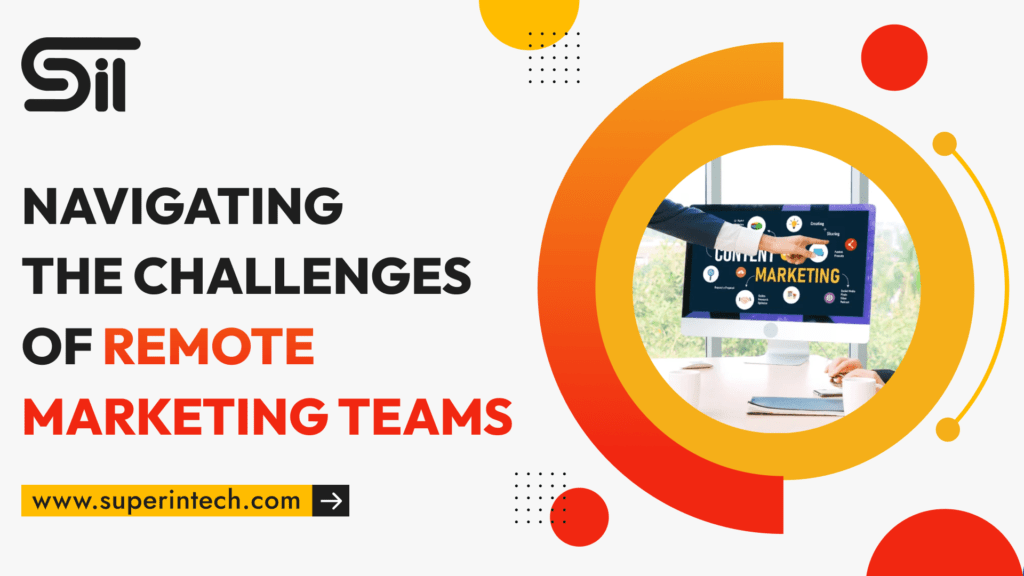
Introduction: The rise of remote work has revolutionized team collaboration and project execution. Yet, managing remote marketing teams poses distinct challenges. In this blog post, we’ll explore these obstacles and share actionable strategies to overcome them. Communication Breakdowns: Effective communication is the lifeblood of successful marketing teams. In a remote environment, the absence of face-to-face interactions can lead to misunderstandings, delays, and a lack of clarity. To address this challenge, invest in robust communication tools that facilitate real-time collaboration. Platforms like Slack, Microsoft Teams, and Asana improve team communication, making it easy for members to exchange updates and collaborate in one virtual space Establishing clear communication protocols is crucial for managing remote marketing teams. Implement regular check-ins, video conferences, and consistent project updates to keep everyone aligned. Encourage open dialogue and create a comfortable environment for team members to express their thoughts and concerns. By fostering transparent communication, remote marketing teams can maintain alignment and cohesiveness, ensuring efficient collaboration. Collaboration and Team Building: Building camaraderie and teamwork can be challenging with team members in different locations. Remote marketing teams often miss out on the spontaneous interactions and bonding that naturally occur in a traditional office setting. To overcome this challenge, prioritize virtual team-building activities. Organize virtual coffee breaks, team challenges, and casual video chats to foster the informal connections usually found in office settings. Invest in collaborative project management tools to streamline workflows and enhance seamless team collaboration. These strategies can help create a cohesive and engaged remote marketing team. Maintaining Accountability: Accountability can be challenging in remote marketing teams, where the lack of physical presence might seem like there’s less oversight. To address this, establish clear expectations and set achievable goals for team members. Utilize project management tools that allow for task tracking, deadlines, and progress monitoring. Regular check-ins and performance reviews help identify challenges faced by team members, offering opportunities to provide support or additional resources. Building a culture of accountability with open communication and clear expectations helps remote marketing teams stay focused and achieve their goals. Data Security Concerns: Remote work introduces additional considerations for data security. Marketing teams handle sensitive information, and working from multiple locations can raise the risk of data breaches. To mitigate this risk, implement robust cybersecurity measures. Use secure communication channels and VPNs to protect data transmission. Regularly train remote team members on cybersecurity to identify threats and follow secure practices. Invest in secure cloud storage to ensure data is safely stored and accessible from anywhere. Work-Life Balance: Maintaining a healthy work-life balance can be tough for marketing teams who are working remotely. Working from home can make it hard for remote marketing teams to separate work from personal life, as their home doubles as their office. Team members often find it hard to separate work from home. To encourage a healthy work-life balance, set clear expectations for working hours and breaks. Encourage team members to take regular breaks, step away from their workstations, and establish boundaries between work and personal life. Promote mental well-being by offering resources like virtual wellness programs, counselling services, or flexible scheduling options. Creating a culture of work-life balance involves clear guidelines on work hours and breaks. Encourage breaks and stepping away from workstations to reinforce boundaries between work and personal life. Support mental well-being with virtual wellness programs, counselling services, or flexible scheduling. Conclusion: Managing remote marketing teams presents challenges, yet implementing thoughtful strategies can convert these hurdles into avenues for growth. By prioritizing effective communication, fostering collaboration, ensuring accountability, addressing data security concerns, and promoting work-life balance, businesses can adeptly navigate the complexities of remote work and unlock the full potential of their marketing teams.Remote work is here to stay, and adapting to its challenges requires continuous effort. As businesses adapt to work dynamics, investing in resilient remote teams helps them overcome challenges and thrive in the digital age. Embracing remote work allows marketing teams to reach new heights of innovation, creativity, and success in a dynamic industry.
E-commerce Strategies for Maximizing Sales
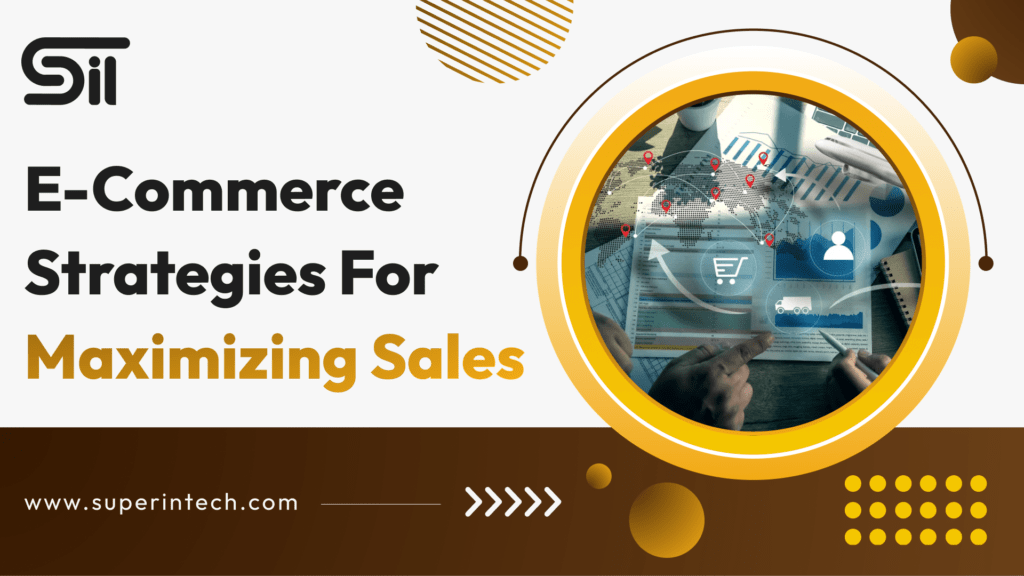
Introduction In the competitive realm of e-commerce, businesses must continuously adapt their e-commerce strategies to stay ahead. To maximize sales and build lasting customer relationships, innovative approaches and a deep understanding of online consumer behaviour are crucial. This blog post explores key e-commerce strategies aimed at achieving these goals. Optimized User Experience The foundation of successful e-commerce strategies lies in providing a seamless and user-friendly experience. Websites and mobile apps should be intuitively designed, with easy navigation, clear product categorization, and a streamlined checkout process. Implementing responsive design ensures a consistent experience across various devices, catering to the diverse ways consumers access online stores. Fast loading times are crucial. Studies show that even a one-second delay in page load time can result in a significant drop in conversion rates. To maximize sales, prioritize optimizing website speed, minimizing page load times, and ensuring a frictionless user journey. Personalization and Recommendations One-size-fits-all approaches are outdated in the world of e-commerce. Personalization is the key to capturing the attention and loyalty of online shoppers. Leverage customer data to provide personalized product recommendations based on past purchases, browsing history, and preferences. AI-driven recommendation engines boost product relevance and increase conversion rates. Amazon uses a sophisticated recommendation system that analyses customer behaviour and purchase history to provide tailored product recommendations. By providing a personalized shopping experience, businesses can create a sense of individualized attention, fostering customer trust and loyalty. Strategic Email Marketing Email marketing remains a powerful tool for boosting e-commerce sales. Create targeted, personalized campaigns to nurture leads, engage existing customers, and recover abandoned carts. Automation in email campaigns enables businesses to send timely and relevant messages like product recommendations, exclusive offers, and personalized promotions. Segment your email lists based on customer behaviour, demographics, or purchase history to deliver more personalized and targeted messages. Monitoring email campaign performance through analytics helps refine strategies over time, ensuring continuous improvement in conversion rates. Mobile Optimization The widespread use of mobile devices for online shopping underscores the need for mobile optimization. Ensure your e-commerce platform is fully responsive and optimized for mobile users. This improves user experience and boosts search engine rankings, as search engines prioritize mobile-friendly sites. Implement mobile-specific features like one-click checkout and mobile payment integrations to streamline purchasing on smartphones and tablets. Mobile optimization goes beyond screen size—it’s about crafting an immersive, user-friendly experience tailored to mobile users. Social Commerce Integration Social media platforms greatly influence consumer behavior. Integrate social commerce into your e-commerce strategies by leveraging platforms like Instagram and Facebook. Showcase products, engage with your audience, and drive traffic to your online store effectively. Social commerce features like shoppable posts and direct purchasing options allow seamless transactions within users’ preferred social media platforms. Meeting customers where they spend their time online helps businesses maximize sales and strengthen their online presence. Leverage User-Generated Content Word of mouth remains a powerful driver of purchasing decisions, even in the digital age. Encourage and showcase user-generated content like customer reviews, testimonials, and product photos. This social proof builds trust and provides authentic insights into real-life customer experiences. Implementing a review and rating system on your e-commerce site allows customers to share their opinions and experiences. Positive reviews attract buyers and negative feedback helps improve products. User-generated content creates a sense of community around your brand, fostering a connection that goes beyond transactional relationships. Conclusion In the realm of e-commerce, success hinges on adapting to the ever-changing digital landscape. By focusing on innovative e-commerce strategies that enhance user experience, personalize interactions, and strategically engage with customers, businesses can unlock new avenues for growth. These strategies boost immediate sales and build long-term customer loyalty and satisfaction. Embracing mobile optimization, leveraging social commerce, and implementing targeted email marketing campaigns are crucial steps in this journey. The integration of advanced technologies like AI-driven analytics and automation can provide invaluable insights into consumer behaviour, allowing businesses to tailor their offerings more effectively. By staying agile and responsive to market trends, e-commerce enterprises can maintain a competitive edge and thrive in an increasingly competitive environment. Ultimately, by combining these elements into cohesive e-commerce strategies, businesses can navigate challenges, capitalize on opportunities, and achieve sustainable growth in the digital marketplace.
Maximizing Engagement Through Interactive Content

Introduction: Interactive Content: Maximizing Engagement In the ever-evolving digital landscape, where content is abundant and attention spans are fleeting, businesses face the challenge of standing out and creating meaningful connections with their audience. Enter interactive content – a dynamic and engaging approach that goes beyond traditional one-way communication. Maximizing engagement through interactive content has become a key strategy for brands looking to capture attention, foster audience participation, and ultimately build a loyal community. The Power of Interaction It represents a paradigm shift from passive consumption to active engagement. It encourages user participation, creating immersive and personalized experiences. This can take various forms, including quizzes, polls, surveys, games, calculators, and more. By transforming the audience from passive observers to active participants, brands can create a more memorable and impactful interaction. Benefits of Interactive Content Types of Interactive Content Implementation Strategies Conclusion In a digital landscape oversaturated with content, the ability to captivate and engage an audience is a competitive advantage that businesses cannot afford to overlook. Maximizing engagement through interactive content is not just a trend; it’s a strategic imperative for brands aiming to thrive in the dynamic digital ecosystem. Interactive content transcends the limitations of traditional marketing by transforming passive consumers into active participants. The benefits are manifold – increased engagement, better understanding of the audience, enhanced memorability, fostered community engagement, and improved conversion rates. As businesses explore new ways to engage their audience, integrating interactive content into marketing strategies becomes pivotal. Embracing interaction helps brands foster stronger connections, leave lasting impressions, and cultivate loyal, engaged communities in the digital age.
Brand Storytelling in the Digital Age

Introduction: In the fast-paced digital age, brand storytelling has become a powerful tool. It allows businesses to connect with their audience on a deeper level. Traditional marketing strategies focused only on product features and benefits are fading. Now, a more human-centric approach is taking over. Brands are leveraging storytelling to create emotional connections and foster brand loyalty. This helps them stand out in the crowded digital marketplace. The Essence of Brand Storytelling: Brand storytelling transcends traditional marketing; it allows businesses to convey their values, purpose, and personality. In a world bombarded with information, stories uniquely capture attention. They resonate with people on a personal level. Thoughtfully crafted brand stories can cut through the noise and leave a lasting impression on consumers. In the digital age, storytelling goes beyond conventional advertising mediums. Social media platforms, blogs, podcasts, and videos have become powerful channels for brands to share their narratives. These platforms allow businesses to engage with their audience in real-time, creating a dynamic and interactive storytelling experience. The Human Connection: In today’s digital landscape, brand storytelling has become a powerful tool for creating meaningful connections with audiences. People yearn for authenticity and relatability, and storytelling provides a way for brands to showcase their human side. By sharing genuine stories about their journey, challenges, and successes, businesses can humanize their identity. This approach helps build trust with their audience. A prime example of effective brand storytelling is Airbnb’s “Belong Anywhere” campaign. Airbnb highlights stories of travellers and hosts. This showcases the unique and personal experiences available through their platform. This approach to storytelling builds an emotional connection. It elevates Airbnb from a service to a lifestyle brand. Engaging and Entertaining Content: In a content-saturated digital landscape, brands must be informative and entertaining. Consumers are more likely to engage with content that captivates their attention and provides value in an enjoyable manner. Successful brand storytelling often involves a balance of information, entertainment, and a compelling narrative. Dollar Shave Club is a prime example of a brand that has mastered the art of entertaining storytelling. The company gained widespread recognition with its humorous and irreverent promotional videos. These videos were narrated by its founder. The content communicated the brand’s value and entertaining the audience, leading to viral success. Adapting to Changing Consumer Behaviour: The digital age has brought about a shift in consumer behaviour. Today’s consumers are not passive recipients of marketing messages. They actively seek out brands that align with their values and resonate with their lifestyle. Brand storytelling allows businesses to adapt to this shift. By creating narratives that connect with the aspirations, desires, and concerns of their target audience, brands can build stronger relationships. Nike’s “Just Do It” campaign is a testament to the brand’s ability to adapt to changing consumer behaviour. The campaign doesn’t just sell athletic gear; it tells stories of individuals overcoming challenges, pushing their limits, and achieving greatness. By aligning the brand with the spirit of determination and success, Nike has successfully resonated with its audience across generations. The Role of Visual Storytelling: With the rise of platforms like Instagram, Pinterest, and TikTok, brands are leveraging visuals to tell compelling stories. Visual content has a quick and powerful impact. It is an ideal medium for capturing the attention of the fast-scrolling digital audience. National Geographic uses breath taking visuals to narrate stories of exploration, conservation, and the wonders of the world. These adjustments should help improve readability and meet the SEO requirements. Conclusion: As we navigate the digital age, brand storytelling stands out as a timeless strategy. It effectively builds meaningful connections with consumers. Crafting and sharing compelling narratives have become crucial for successful marketing campaigns. Brands that understand the power of storytelling and embrace authenticity thrive. They adapt to the evolving digital landscape, positioning themselves better in the competitive marketplace. In an era of short attention spans and abundant choices, storytelling serves as a beacon. It guides brands toward building lasting relationships with their audience. It is not just about selling a product or service. It’s about creating a narrative that resonates, inspires, and leaves a lasting imprint on the hearts and minds of consumers. As we move forward, brands that continue to refine their storytelling skills.
Innovations in Marketing Automation Tools
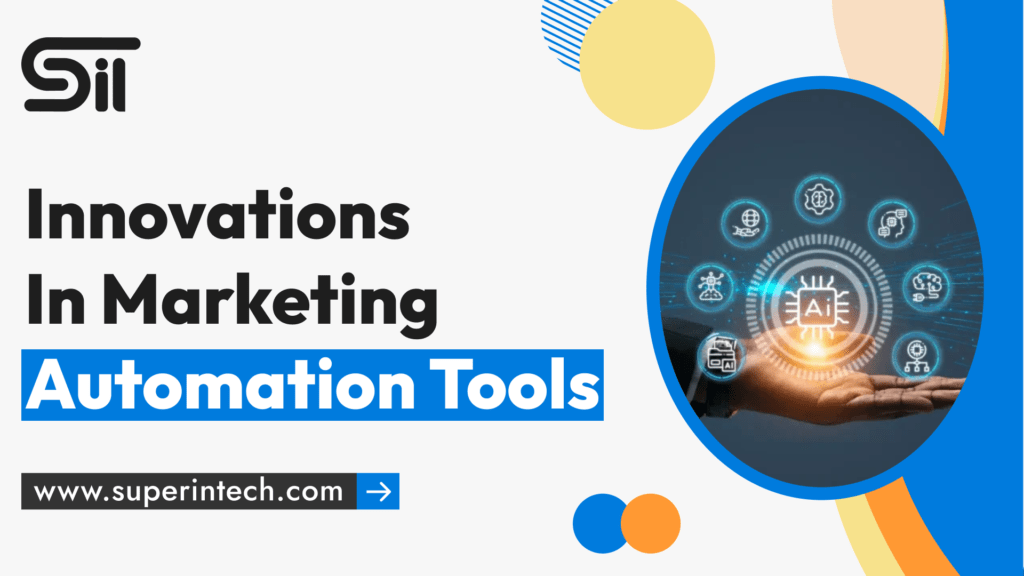
Introduction: In the ever-evolving landscape of digital marketing, staying ahead requires embracing innovative technologies. Marketing automation tools have become the linchpin for businesses seeking to streamline processes, enhance customer engagement, and maximize efficiency. This blog post delves into the latest innovations in marketing automation tools, exploring the cutting-edge features that are reshaping the way marketers plan, execute, and analyse their campaigns. Artificial Intelligence (AI) and Machine Learning (ML) Integration: The integration of AI and ML has emerged as a game-changer in marketing automation. These technologies enable automation tools to analyse vast amounts of data, predict customer behaviour, and personalize marketing campaigns in real-time. AI-driven insights enhance decision-making processes, allowing marketers to tailor their strategies based on evolving trends and customer preferences. Predictive Analytics for Enhanced Lead Scoring: Traditional lead scoring models often rely on historical data and predefined criteria. Innovations in marketing automation tools now incorporate predictive analytics, enabling more accurate lead scoring. By leveraging machine learning algorithms, these tools analyse past interactions, identify patterns, and predict which leads are most likely to convert. This predictive approach helps us prioritize leads better and boosts how effective we are at nurturing them. Dynamic Content Personalization: Dynamic content personalization represents a pivotal advancement in marketing automation tools, revolutionizing how brands engage with their audience. By dynamically tailoring website content, email communications, and marketing assets based on individual user behaviour’s, preferences, and demographics, businesses can deliver highly relevant experiences that resonate deeply with their target audience. Embracing dynamic content personalization enables brands to stay agile in an ever-evolving digital landscape, adapting swiftly to customer needs and preferences for maximum impact. Chatbots and Conversational Marketing: Chatbots powered by AI have become integral to marketing automation, enabling real-time interactions and personalized conversations with users. These tools go beyond traditional automated responses, using natural language processing to understand and respond to user queries. Conversational marketing through chatbots facilitates immediate engagement, lead qualification, and provides valuable insights into customer needs. Cross-Channel Marketing Orchestration: The modern consumer journey spans various channels, from social media and email to websites and mobile apps. Innovative marketing automation tools facilitate cross-channel marketing orchestration, allowing marketers to create cohesive and consistent campaigns across multiple platforms. This makes sure customers have a smooth experience, no matter how they connect with the brand. Customer Journey Mapping and Automation: Mapping and automating the customer journey is a pivotal innovation in marketing automation. Advanced tools enable marketers to visualize and understand the entire customer journey, from the first touchpoint to conversion and beyond. Automation based on customer journey mapping allows for the timely delivery of relevant content and engagement, fostering a more personalized and effective customer experience. Social Media Integration and Automation: As social media continues to play a crucial role in digital marketing, automation tools have evolved to integrate seamlessly with various social platforms. Marketers can schedule posts, track engagement, and analyse social media performance directly from their automation dashboard. This integration streamlines social media management, allowing marketers to maintain an active and consistent online presence. Real-Time Analytics and Reporting: Real-time insights are increasingly crucial, and marketing automation tools are stepping up to meet this demand. Advanced analytics and reporting functionalities provide marketers with immediate visibility into campaign performance, audience engagement, and conversion metrics. Real-time data empowers marketers to make informed decisions on the fly, optimizing campaigns for maximum impact. ABM (Account-Based Marketing) Automation: Account-Based Marketing has gained traction as a strategic approach for B2B marketers. Innovations in marketing automation tools now offer specialized features for ABM. These tools enable marketers to personalize campaigns for specific accounts, coordinate efforts across teams, and measure the impact of ABM strategies on target accounts, ultimately increasing the effectiveness of B2B marketing initiatives. Robust Integration Ecosystems: To maximize efficiency, marketing automation tools are now designed to seamlessly integrate with other essential business tools and platforms. Integrating Customer Relationship Management (CRM) systems, e-commerce platforms, and analytics tools creates a seamless workflow with consistent data across marketing and sales operations. Conclusion: Innovations in marketing automation tools are reshaping the digital marketing landscape, providing marketers with powerful capabilities to streamline processes, enhance personalization, and drive better results. The integration of AI and ML, predictive analytics, dynamic content personalization, and other advanced features reflects the industry’s commitment to staying ahead of evolving trends and meeting the demands of a dynamic consumer landscape. As technology continues to evolve, marketing automation tools are becoming indispensable for businesses navigating the complexities of digital marketing. As technology continues to evolve, marketing automation tools are becoming indispensable for businesses navigating the complexities of digital marketing. Looking ahead, the future of marketing automation promises increasingly sophisticated tools that will empower marketers to deliver exceptional customer experiences and achieve new levels of success. Looking ahead, the future of marketing automation promises increasingly sophisticated tools that will empower marketers to deliver exceptional customer experiences and achieve new levels of success.
The Importance of Cybersecurity in Digital Marketing

Introduction: In the digital age, businesses leverage online platforms for marketing and communication. The importance of cybersecurity in digital marketing cannot be overstated. This blog post explores the critical role of cybersecurity in digital marketing, delving into the risks involved and the impact of cyber threats. It discusses the proactive measures businesses must take to safeguard their online presence. The Pervasiveness of Digital Marketing: Digital marketing is now an integral part of every successful business strategy. Businesses use social media campaigns, email marketing, SEO, and online advertising to connect with their audience, build brand awareness, and drive sales. The increased reliance on digital platforms makes businesses vulnerable to cybersecurity risks. Risks in Digital Marketing: a. Phishing Attacks: Phishing is a prevalent cyber threat wherein attackers impersonate legitimate entities to deceive individuals into providing sensitive information. In digital marketing, phishing attacks target businesses and customers through fraudulent emails, social media messages, or fake websites. b. Data Breaches: Digital marketing involves the collection and storage of vast amounts of customer data. A data breach can expose sensitive information, including customer names, email addresses, and payment details. The aftermath of a data breach can tarnish a brand’s reputation and erode customer trust. c. Malware and Ad Fraud: Cybercriminals often exploit digital advertising platforms to distribute malware or engage in ad fraud. Malicious ads can lead users to websites containing malware, compromising their devices and data. Ad fraud involves manipulating digital advertising to generate illegitimate revenue, impacting the effectiveness of marketing campaigns. d. Social Media Threats: Social media platforms are not immune to cybersecurity threats. Account hijacking, fake profiles, and the spread of malicious content can harm a brand’s image and negatively influence customer perception. Maintaining a secure social media presence is crucial for digital marketing success. The Impact of Cyber Threats on Digital Marketing: The repercussions of cybersecurity breaches extend beyond immediate financial losses. The impact on a brand’s reputation, customer trust, and business continuity can be severe. A single cyber incident can cause loss of customer confidence, legal issues, and prolonged recovery efforts, hindering digital marketing efforts. Trust as the Foundation of Digital Marketing: Trust is a cornerstone of successful digital marketing. Customers must feel confident that their data is secure and transactions are conducted in a protected environment. A cybersecurity incident can breach trust, causing customers to disengage, thereby impacting brand loyalty and long-term relationships. Proactive Cybersecurity Measures for Digital Marketing: a. Employee Training: Human error remains one of the leading causes of cybersecurity incidents. Training employees on cybersecurity best practices, recognizing phishing attempts, and understanding data protection is essential. b. Secure Website and Payment Gateways: Ensuring the security of the website and any associated payment gateways is paramount. Using SSL certificates, encrypting customer data, and adhering to PCI DSS guidelines are critical. c. Regular Software Updates: Keeping software, including CMS, plugins, and marketing tools, up to date is crucial for closing security vulnerabilities. Cybercriminals often exploit outdated software to gain unauthorized access. d. Implementing Multi-Factor Authentication (MFA): Multi-factor authentication boosts security by requiring multiple forms of ID to access sensitive systems or data, greatly reducing the risk of unauthorized access. e. Monitoring and Incident Response: Robust monitoring tools and an incident response plan help businesses quickly detect and respond to cybersecurity threats. Early detection can mitigate the potential impact of an incident. f. Privacy Compliance: Adhering to privacy regulations like GDPR and other regional laws is crucial. It protects customer data and ensures businesses operate legally. Conclusion: In the digital age, cybersecurity is crucial for online business success. As cyber threats evolve, businesses need a proactive approach to protect digital assets, customer data, and their brand. By investing in strong cybersecurity measures, businesses can ensure their digital marketing efforts lead to growth and not vulnerability. Prioritizing data protection and securing online platforms fosters a culture of cybersecurity awareness, allowing businesses to navigate the digital landscape with confidence.
